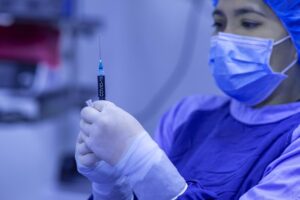
Radomes are an important part of an aircraft, as they protect the delicate avionics and instruments from the elements. However, water ingression into composite radomes can be a serious problem, as it can cause corrosion and damage to the radome and the aircraft. In this post, we will take a look at the causes of water ingression into composite radomes, and how to prevent it.
What is an NDE for water ingression in composite radomes?
When water ingresses a radome (a composite enclosure used to protect a radar system), the results can be disastrous. Not only can water damage the delicate electronic equipment inside the radome, it can also cause the radome to collapse.
To avoid such disasters, engineers often design radomes with a “non-destructive entry” (NDE) feature. This feature allows water to enter the radome without damaging it.
There are several different ways to design an NDE. One common method is to use a series of small holes in the radome’s outer shell. These holes allow water to enter the radome, but they are too small to cause any damage.
Another common method is to use a special type of composite material that is both strong and water-resistant. This material is often used in boat hulls and other applications where water resistance is important.
The goal is to enable water into the radome without damage. Engineers can build radomes to endure heavy rains using NDE.
Why is this method used on aircraft?
Even though aircraft fly at high altitudes, they are susceptible to lightning strikes. A lightning bolt can travel through the metal skin of the aircraft and damage the electronics inside. To protect the delicate electronics, aircraft are equipped with lightning protection devices called Near Field Discharge Elements, or NDEs.
NDEs are devices that create an electrical field around the aircraft that diverts the lightning bolt away from the electronics. The electrical field is generated by a high-voltage power supply inside the NDE. When a lightning bolt strikes the aircraft, the electrical field causes the current from the bolt to flow around the aircraft instead of through it.
Military and commercial aircraft use NDEs. Not all private planes utilise them. NDEs can interfere with an aircraft’s navigation and communication systems, thus some manufacturers don’t suggest using them. Most pilots and aircraft owners believe NDE benefits exceed hazards.
You can also read How to Drive Better in the Rain: 6 Important Tips
How does this method work?
NDE, or nondestructive examination, is a technique used to inspect aircraft components for defects without causing damage. There are several different NDE methods, each of which has its own advantages and disadvantages.
The most common NDE methods used on aircraft are eddy current testing, ultrasonic testing, and X-ray testing. Eddy current testing uses a magnetic field to detect defects in conductive materials, while ultrasonic testing uses high-frequency sound waves to detect defects in both conductive and non-conductive materials. X-ray testing is the most expensive and time-consuming of the three, but it can detect defects in both conductive and non-conductive materials that are not detectable by the other methods.
The NDE method utilised depends on the material, defect kind, cost, and time restrictions. Eddy current testing is the most popular NDE method on aeroplanes since it’s rapid, affordable, and works on a range of materials. Ultrasonic testing is expensive and time-consuming, but it’s better at spotting specific problems. X-ray testing is utilised when other methods have failed or when cost and time are not a concern.
Pros and cons of using this NDE in aircraft?
When it comes to aircraft, the use of NDE can have both its pros and cons. Let’s take a closer look at each side:
Pros:
1. NDE can detect defects or damage in an aircraft so they can be rectified before accidents or significant events.
2. It can also help to improve the overall safety of an aircraft by checking for any hidden damage that may not be detectable by the naked eye.
3. In some cases, NDE can also be used to diagnose problems with an aircraft’s engines or other systems, again helping to improve safety and prevent any potential issues.
Cons:
1. NDE can be time-consuming, especially when checking many aeroplanes.
2. It can be expensive, especially with a complex NDE system.
3. NDE can yield false positives, leading to unnecessary repairs or replacements.
Overall, the pros of using NDE in aircraft generally outweigh the cons. The benefits of improved safety and the ability to prevent potential accidents or incidents make NDE a worthwhile investment for most aircraft operators.


